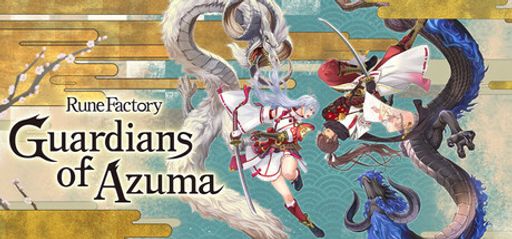 I’m pumped about Rune Factory: Guardians of Azuma by Marvelous Inc., published by XSEED Games. What draws me in is its vibrant Japanese fantasy setting infused with eastern folklore. According to Steam reviewers, the game shines with expressive characters and lush, scenic environments. They also appreciate how the simplified farming mechanics feel like a refreshing twist compared to earlier entries. As an open-world explorer, I’m especially into discovering hidden monsters and navigating seasonal zones. It’s worth noting—Marvelous Inc. kicked off the Rune Factory series back in 2006.
I’m pumped about Rune Factory: Guardians of Azuma by Marvelous Inc., published by XSEED Games. What draws me in is its vibrant Japanese fantasy setting infused with eastern folklore. According to Steam reviewers, the game shines with expressive characters and lush, scenic environments. They also appreciate how the simplified farming mechanics feel like a refreshing twist compared to earlier entries. As an open-world explorer, I’m especially into discovering hidden monsters and navigating seasonal zones. It’s worth noting—Marvelous Inc. kicked off the Rune Factory series back in 2006.
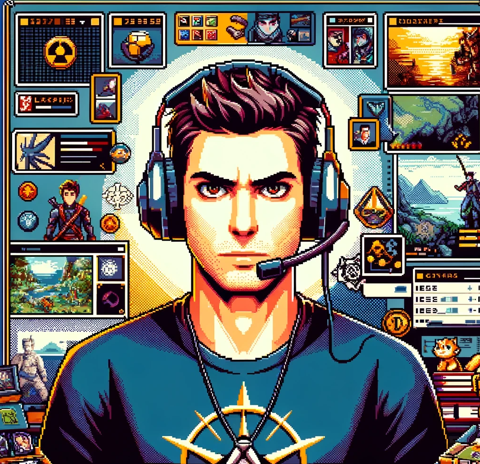 One standout feature for me is how you rebuild villages piece by piece. There’s real satisfaction in assigning villagers to specific roles like farming or mining. Every time you restore a seasonal god, the game keeps track, adding a layer of meaningful progress. According to community feedback on Steam, quality-of-life upgrades like task automation really help with long chores. That said, some longtime fans do miss the deeper crafting systems and detailed house interiors. Still, Marvelous streamlined tool usage—you no longer need to switch axes just to farm. It’s a smart move that accelerates gameplay without sacrificing exploration.
One standout feature for me is how you rebuild villages piece by piece. There’s real satisfaction in assigning villagers to specific roles like farming or mining. Every time you restore a seasonal god, the game keeps track, adding a layer of meaningful progress. According to community feedback on Steam, quality-of-life upgrades like task automation really help with long chores. That said, some longtime fans do miss the deeper crafting systems and detailed house interiors. Still, Marvelous streamlined tool usage—you no longer need to switch axes just to farm. It’s a smart move that accelerates gameplay without sacrificing exploration.
 When it comes to combat, Rune Factory: Guardians of Azuma delivers tight, responsive action. I especially enjoy using Earth Dancer abilities to purify corrupted monsters—it’s a clever mechanic. The dynamic party banter reminds me of the Tales of series, adding richness to every encounter. With defined roles like defender, healer, and attacker, the synergy between characters really pops. While hardcore fans might crave tougher late-game bosses or more complex skill trees, Marvelous has a history of fine-tuning difficulty through DLC updates. Meanwhile, XSEED Games continues to impress with top-tier localization for both text and voiceovers.
When it comes to combat, Rune Factory: Guardians of Azuma delivers tight, responsive action. I especially enjoy using Earth Dancer abilities to purify corrupted monsters—it’s a clever mechanic. The dynamic party banter reminds me of the Tales of series, adding richness to every encounter. With defined roles like defender, healer, and attacker, the synergy between characters really pops. While hardcore fans might crave tougher late-game bosses or more complex skill trees, Marvelous has a history of fine-tuning difficulty through DLC updates. Meanwhile, XSEED Games continues to impress with top-tier localization for both text and voiceovers.
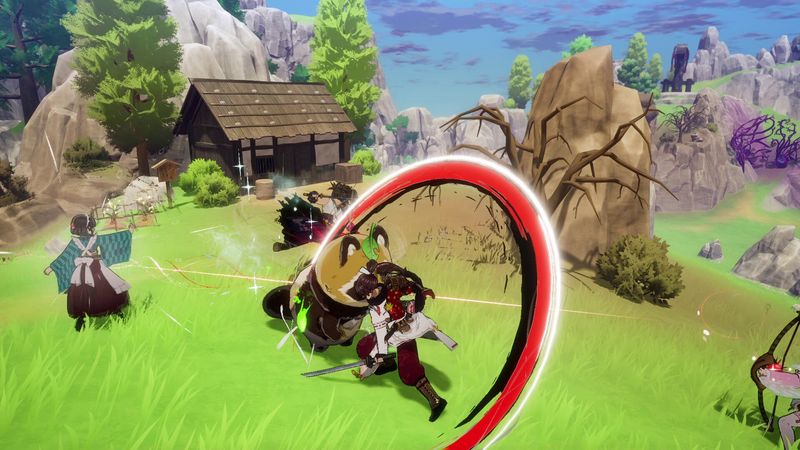
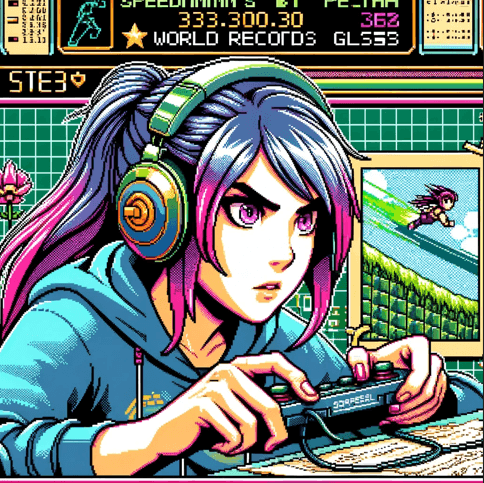 I even tested out some speedrun strategies on normal mode. The main town rebuild quest clocks in at around eight hours at full tilt. You can shave off minutes by skipping cutscenes or taking advantage of the game’s auto-tool selection. Over on Steam chat, fans report two-hour combat-focused runs. Interestingly, some shrine restores can be sequence-broken, making for quicker endings. I love that your farming tasks don’t interrupt your quest momentum—it’s a welcome balance.
I even tested out some speedrun strategies on normal mode. The main town rebuild quest clocks in at around eight hours at full tilt. You can shave off minutes by skipping cutscenes or taking advantage of the game’s auto-tool selection. Over on Steam chat, fans report two-hour combat-focused runs. Interestingly, some shrine restores can be sequence-broken, making for quicker endings. I love that your farming tasks don’t interrupt your quest momentum—it’s a welcome balance.
 Diving into mechanics, the Bow and Talisman add a fresh twist. You’ll shoot glowing arrows to cleanse land while dance combos let you reshape terrain dynamically. It plays like a fusion of Harvest Moon and an action RPG. I’ve even seen similar town-building elements in Stardew Valley mods, which shows the game’s crossover appeal.
Diving into mechanics, the Bow and Talisman add a fresh twist. You’ll shoot glowing arrows to cleanse land while dance combos let you reshape terrain dynamically. It plays like a fusion of Harvest Moon and an action RPG. I’ve even seen similar town-building elements in Stardew Valley mods, which shows the game’s crossover appeal.
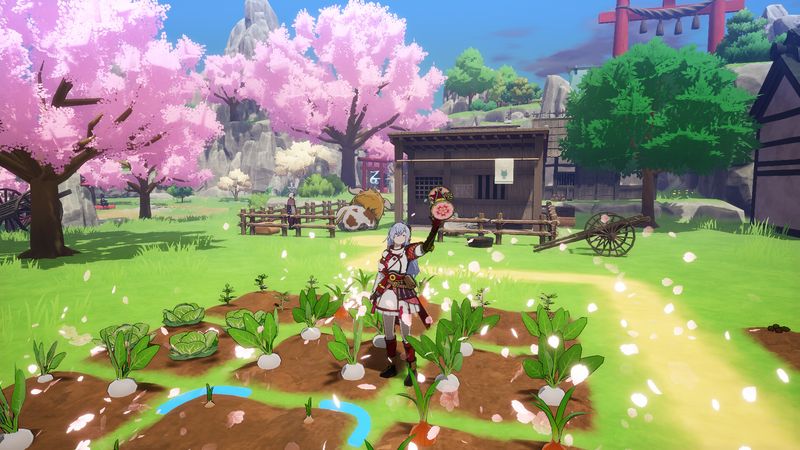
 The farming has been modernized, too. Nodes now auto-target, so you can harvest without needing to equip hoes or tools manually. That’s a big upgrade from the 800-tool shuffle of previous titles. While seasonal crops still play a role in maximizing profits, assigning villagers to upgrade buildings adds strategic depth.
The farming has been modernized, too. Nodes now auto-target, so you can harvest without needing to equip hoes or tools manually. That’s a big upgrade from the 800-tool shuffle of previous titles. While seasonal crops still play a role in maximizing profits, assigning villagers to upgrade buildings adds strategic depth.
 Combat combos feel smooth whether you’re using a controller or keyboard. Enemy attacks are clearly telegraphed, giving you room to counter. Arena battles, in particular, are great tests of your Earth Dancer timing. Admittedly, some skill trees feel a bit limited, so I’d love to see more branching builds in a future patch.
Combat combos feel smooth whether you’re using a controller or keyboard. Enemy attacks are clearly telegraphed, giving you room to counter. Arena battles, in particular, are great tests of your Earth Dancer timing. Admittedly, some skill trees feel a bit limited, so I’d love to see more branching builds in a future patch.
 Puzzle-based combat offers an added layer of depth. You’ll need to use elemental switches and area-of-effect moves to clear floors efficiently. Memorizing shrine puzzle layouts can save over five minutes per run, which is a huge bonus for speedrunners. That kind of optimization keeps things interesting.
Puzzle-based combat offers an added layer of depth. You’ll need to use elemental switches and area-of-effect moves to clear floors efficiently. Memorizing shrine puzzle layouts can save over five minutes per run, which is a huge bonus for speedrunners. That kind of optimization keeps things interesting.
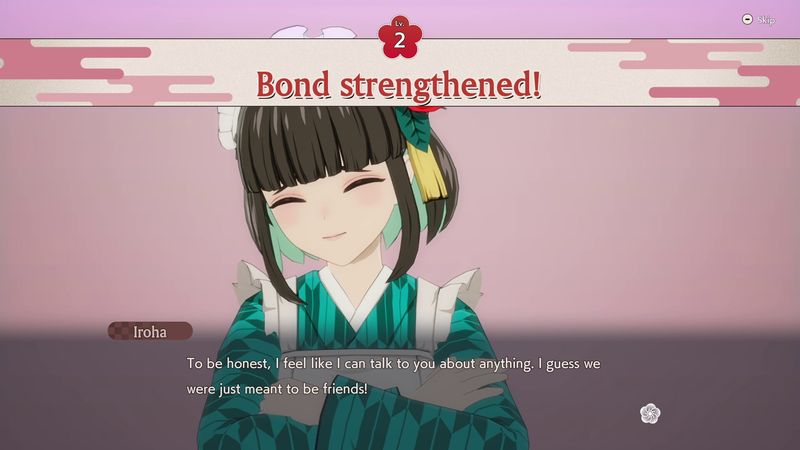
 Story-wise, I was immediately hooked by the Celestial Collapse mystery. Awakening with dragon dreams and healer powers made for a strong narrative start. I genuinely felt connected to restoring each god. According to developer interviews, Marvelous designed Azuma’s lore around seasonal cycles, drawing inspiration from Shinto mythology—an excellent touch.
Story-wise, I was immediately hooked by the Celestial Collapse mystery. Awakening with dragon dreams and healer powers made for a strong narrative start. I genuinely felt connected to restoring each god. According to developer interviews, Marvelous designed Azuma’s lore around seasonal cycles, drawing inspiration from Shinto mythology—an excellent touch.
 Dialogue scenes are cozy and fully voiced, enhancing immersion. Choosing daily activities helps build affection with townspeople, a system praised by many on Steam. The waterfall quest with Murasame stands out as a fan favorite. While you can’t explore NPC homes for extra lore like in past games, journals and shrine inscriptions help fill in the narrative gaps.
Dialogue scenes are cozy and fully voiced, enhancing immersion. Choosing daily activities helps build affection with townspeople, a system praised by many on Steam. The waterfall quest with Murasame stands out as a fan favorite. While you can’t explore NPC homes for extra lore like in past games, journals and shrine inscriptions help fill in the narrative gaps.
 Character arcs unfold through fully voiced events, letting you explore every romance candidate’s backstory during festivals. These arcs link directly to team synergy and special combo attacks in combat. I also appreciate the game’s commitment to diverse personalities and inclusive romance options. Some characters unlock passive buffs after major story points, while others adjust their dialogue based on who you romance—little touches that make every playthrough feel distinct.
Character arcs unfold through fully voiced events, letting you explore every romance candidate’s backstory during festivals. These arcs link directly to team synergy and special combo attacks in combat. I also appreciate the game’s commitment to diverse personalities and inclusive romance options. Some characters unlock passive buffs after major story points, while others adjust their dialogue based on who you romance—little touches that make every playthrough feel distinct.
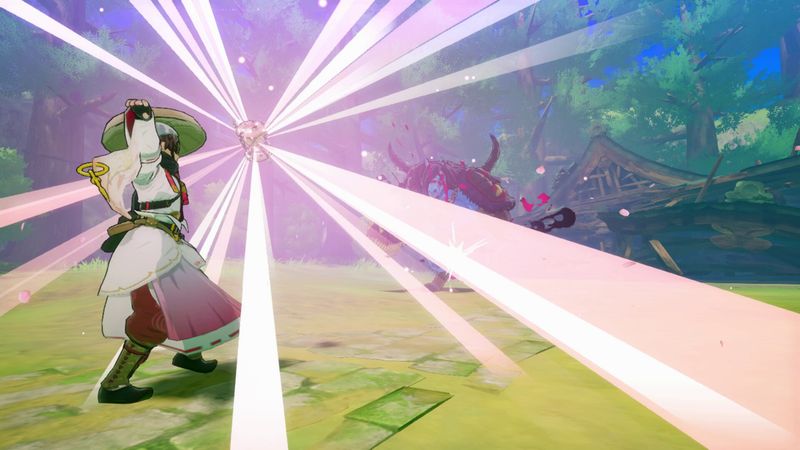
 The sound design plays a surprisingly strategic role. You’ll use audio cues to track hidden monsters, and bow shots echo cleanly in caves. Seasonal music changes in the village help time buffs and runs. Even environmental sounds, like rustling grass before an ambush or muffled footsteps in snowy forests, deepen the immersion and add tension.
The sound design plays a surprisingly strategic role. You’ll use audio cues to track hidden monsters, and bow shots echo cleanly in caves. Seasonal music changes in the village help time buffs and runs. Even environmental sounds, like rustling grass before an ambush or muffled footsteps in snowy forests, deepen the immersion and add tension.
 Visually, the game’s custom Marvelous engine excels. The cel-shaded style paired with bold color palettes makes each season pop—lush fields in spring, icy stillness in winter. Performance is strong on both PC and Switch, with rain-slick water effects and glowing character models at sunrise or dusk enhancing the polish without any performance dips.
Visually, the game’s custom Marvelous engine excels. The cel-shaded style paired with bold color palettes makes each season pop—lush fields in spring, icy stillness in winter. Performance is strong on both PC and Switch, with rain-slick water effects and glowing character models at sunrise or dusk enhancing the polish without any performance dips.
 I often stopped to admire the sunrise over rice fields. The game’s animation system skips static portraits in favor of expressive full-body poses. Small gestures—like brushing off rain or warming hands—add to the storytelling. These lifelike touches really bring the characters to life.
I often stopped to admire the sunrise over rice fields. The game’s animation system skips static portraits in favor of expressive full-body poses. Small gestures—like brushing off rain or warming hands—add to the storytelling. These lifelike touches really bring the characters to life.
 Playing on PC at unlocked 60 FPS made a huge difference. Combat felt more precise, and there were barely any text pop-ins. Weapon trails looked cleaner during combos, and loading screens were nearly nonexistent. It’s a significantly smoother experience than on console.
Playing on PC at unlocked 60 FPS made a huge difference. Combat felt more precise, and there were barely any text pop-ins. Weapon trails looked cleaner during combos, and loading screens were nearly nonexistent. It’s a significantly smoother experience than on console.
 In combat, audio cues perfectly sync with visuals. That alignment sharpens dodges and reactions—you start to move by instinct, just by listening to the rhythm of your weapon swings. It creates a rewarding feedback loop as battles get more intense.
In combat, audio cues perfectly sync with visuals. That alignment sharpens dodges and reactions—you start to move by instinct, just by listening to the rhythm of your weapon swings. It creates a rewarding feedback loop as battles get more intense.
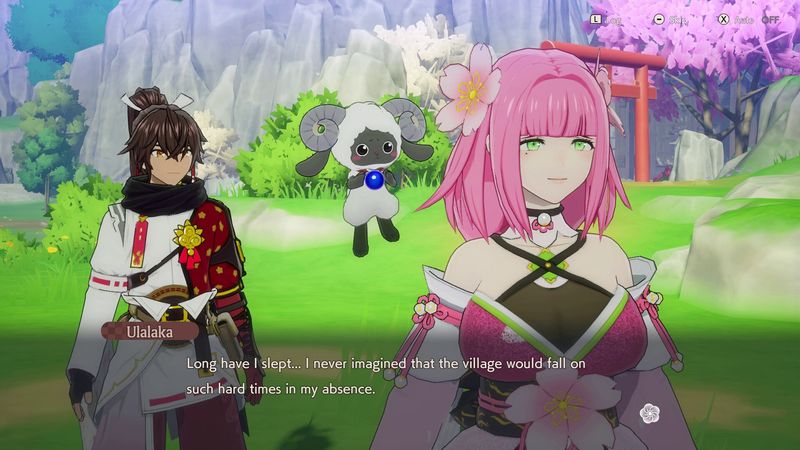
 The challenge curve balances farming, crafting, and combat smoothly. Early-game pacing is gentle, but mid-story boss fights raise the stakes. Steam forum discussions often mention a difficulty spike midway. Fortunately, accessible modes keep newer players engaged, while advanced players can turn off buffs and HUD aids. Seasonal crop choices also impact your gear upgrades, so planning becomes essential for efficient progress.
The challenge curve balances farming, crafting, and combat smoothly. Early-game pacing is gentle, but mid-story boss fights raise the stakes. Steam forum discussions often mention a difficulty spike midway. Fortunately, accessible modes keep newer players engaged, while advanced players can turn off buffs and HUD aids. Seasonal crop choices also impact your gear upgrades, so planning becomes essential for efficient progress.
 The achievement system adds replay motivation. Clearing shrines, maxing out romances, and restoring all gods earns you plenty to chase. Some achievements unlock secret dialogue or map details, while others hint at deeper lore. Completionists will find this especially rewarding.
The achievement system adds replay motivation. Clearing shrines, maxing out romances, and restoring all gods earns you plenty to chase. Some achievements unlock secret dialogue or map details, while others hint at deeper lore. Completionists will find this especially rewarding.
 I’d love to see a more challenging “God Mode” boss rush. It would be the ultimate test of gear setups and shrine blessings. Throw in timed gauntlets, and you’d have the perfect blend of reflex and strategy.
I’d love to see a more challenging “God Mode” boss rush. It would be the ultimate test of gear setups and shrine blessings. Throw in timed gauntlets, and you’d have the perfect blend of reflex and strategy.
 Adding in-game time attack leaderboards would boost the game’s race appeal. Right now, the community uses third-party timers, but built-in tracking could highlight top routes. Weekly speedrun challenges would add even more competition and keep the meta fresh.
Adding in-game time attack leaderboards would boost the game’s race appeal. Right now, the community uses third-party timers, but built-in tracking could highlight top routes. Weekly speedrun challenges would add even more competition and keep the meta fresh.
 Replayability is strong thanks to branching romance paths and shrine restoration orders. Secret bosses and hidden areas offer new challenges each time. Some narrative arcs only trigger after specific village upgrades, while others change based on your final team. It’s designed to reward experimentation.
Replayability is strong thanks to branching romance paths and shrine restoration orders. Secret bosses and hidden areas offer new challenges each time. Some narrative arcs only trigger after specific village upgrades, while others change based on your final team. It’s designed to reward experimentation.
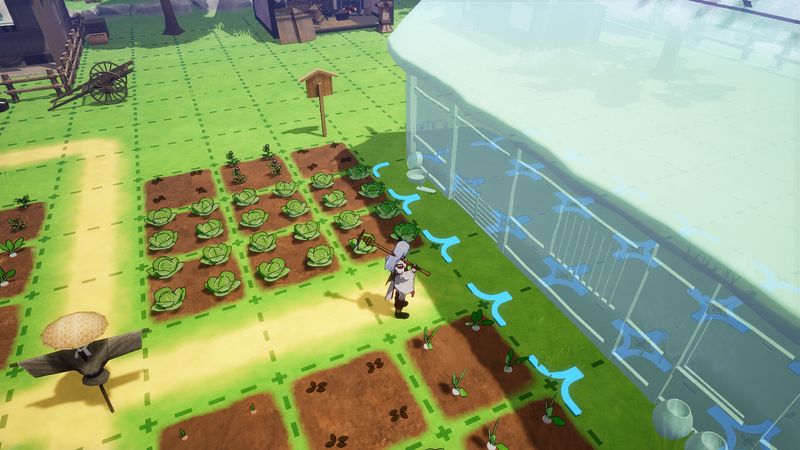
 I’m planning a full 100% completion guide. I’ll chart out seasonal crop paths, enemy spawn cycles, and shrine logs. I’ll also track festival unlocks and NPC gift preferences to round it all out.
I’m planning a full 100% completion guide. I’ll chart out seasonal crop paths, enemy spawn cycles, and shrine logs. I’ll also track festival unlocks and NPC gift preferences to round it all out.
 Team composition adds another replay layer. A party stacked with defenders feels totally different from a healer-heavy one. Speed-focused builds crush early bosses but struggle late-game. Hybrid roles bring unexpected advantages. I enjoy the theorycrafting behind each new setup.
Team composition adds another replay layer. A party stacked with defenders feels totally different from a healer-heavy one. Speed-focused builds crush early bosses but struggle late-game. Hybrid roles bring unexpected advantages. I enjoy the theorycrafting behind each new setup.
 Optimizing shrine orders is another puzzle. I’m already chasing personal bests. Buffs that cut gathering time or boost drops can shave off minutes. Early mobility perks, in particular, make a big difference in run efficiency.
Optimizing shrine orders is another puzzle. I’m already chasing personal bests. Buffs that cut gathering time or boost drops can shave off minutes. Early mobility perks, in particular, make a big difference in run efficiency.
 In the end, Guardians of Azuma breathes new life into Rune Factory by skillfully combining farming, action, town-building, and romance—all grounded in a rich world inspired by Japanese mythology and powered by dynamic dance mechanics. If you’re hungry for more, try Rune Factory 5 for a refined island-hopping adventure, Story of Seasons: Pioneers of Olive Town for advanced village design, Stardew Valley with its cozy mod-supported farming, My Time at Portia for crafting and dungeon exploration, or Yonder: The Cloud Catcher Chronicles for peaceful open-world adventures.
In the end, Guardians of Azuma breathes new life into Rune Factory by skillfully combining farming, action, town-building, and romance—all grounded in a rich world inspired by Japanese mythology and powered by dynamic dance mechanics. If you’re hungry for more, try Rune Factory 5 for a refined island-hopping adventure, Story of Seasons: Pioneers of Olive Town for advanced village design, Stardew Valley with its cozy mod-supported farming, My Time at Portia for crafting and dungeon exploration, or Yonder: The Cloud Catcher Chronicles for peaceful open-world adventures.
Add Rune Factory: Guardians of Azuma to your games on Steam!

